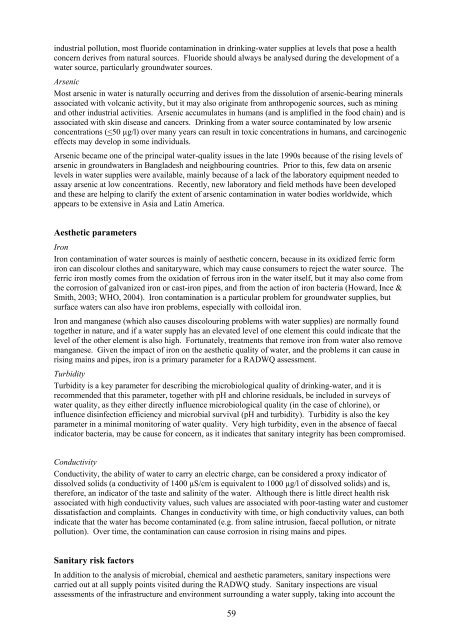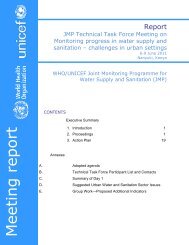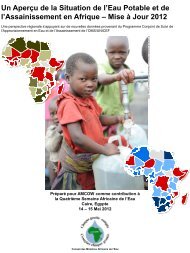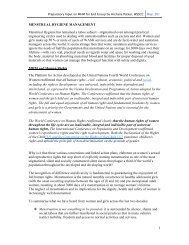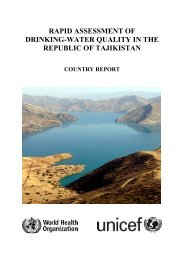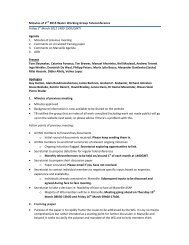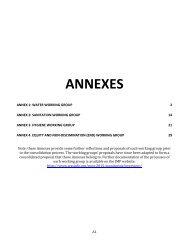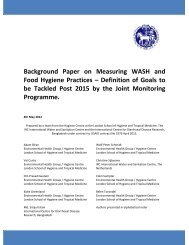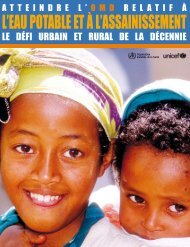Rapid assessment of drinking-water quality in the - WHO/UNICEF ...
Rapid assessment of drinking-water quality in the - WHO/UNICEF ...
Rapid assessment of drinking-water quality in the - WHO/UNICEF ...
Create successful ePaper yourself
Turn your PDF publications into a flip-book with our unique Google optimized e-Paper software.
<strong>in</strong>dustrial pollution, most fluoride contam<strong>in</strong>ation <strong>in</strong> <strong>dr<strong>in</strong>k<strong>in</strong>g</strong>-<strong>water</strong> supplies at levels that pose a health<br />
concern derives from natural sources. Fluoride should always be analysed dur<strong>in</strong>g <strong>the</strong> development <strong>of</strong> a<br />
<strong>water</strong> source, particularly ground<strong>water</strong> sources.<br />
Arsenic<br />
Most arsenic <strong>in</strong> <strong>water</strong> is naturally occurr<strong>in</strong>g and derives from <strong>the</strong> dissolution <strong>of</strong> arsenic-bear<strong>in</strong>g m<strong>in</strong>erals<br />
associated with volcanic activity, but it may also orig<strong>in</strong>ate from anthropogenic sources, such as m<strong>in</strong><strong>in</strong>g<br />
and o<strong>the</strong>r <strong>in</strong>dustrial activities. Arsenic accumulates <strong>in</strong> humans (and is amplified <strong>in</strong> <strong>the</strong> food cha<strong>in</strong>) and is<br />
associated with sk<strong>in</strong> disease and cancers. Dr<strong>in</strong>k<strong>in</strong>g from a <strong>water</strong> source contam<strong>in</strong>ated by low arsenic<br />
concentrations (


